Architecture


What Is User Analysis In Architecture
User analysis in architecture is a design process used to gather, interpret and analyze user feedback in order to inform the design process. User analysis allows architects to consider the opinions and experiences of users in order to create the the most highly functional and user friendly design.
User analysis is frequently employed in service and product design, as it allows designers to gain valuable insight into the user experience. User analysis in architecture differs slightly as it specifically considers how users interact with the built environment. Buildings are design with a purpose defined by their end-users; architects must work to create a blueprint that meets their users’ needs and expectations.
The key element of user analysis in architecture is user participation. User studies are conducted by interviewing and observing users in order to gather data about how they will interact with a space and what requirements they may have. This data is translated into a design brief and used by architects to create designs that will meet their user’s needs.

In addition to interviewing and observing users, architects may also use photographs, surveys and interviews with stakeholders to gain an understanding of user needs. By combining qualitative and quantitative data, architects can have a better insight into the user experience and design better spaces to meet their needs.
User analysis in architecture also requires consideration of user’s comfort, safety and wellbeing. Architects must consider the physical and psychological aspects of the design process to ensure users feel safe and comfortable in the designed space. User comfort and safety is especially important in public spaces, like parks and public plazas, where users are likely to be spending long periods of time.
At its core, user analysis in architecture is about ensuring users can access and interact with a design in the most efficient and comfortable way possible. It is important to consider the user experience from the start, as design decisions can dramatically alter a user’s experience of a space. By taking the time to consider user feedback and needs, architects can ensure the design process takes into account user experience.
Measuring Performance
User analysis in architecture must involve measuring the performance of a design. Performance metrics are needed to assess how well a design is meeting user needs and can be used to identify problems and suggest solutions. Performance metrics should be tracked over time and evaluated in order to identify where improvements can be made.

Performance metrics can be used to gauge user satisfaction with a design. Surveys are often used to gather information from the users and can be used to assess user experience. Feedback from user surveys can be used to identify areas of improvement and inform the design process.
In addition to surveys, architects should also consider data gathered from observation studies in order to track user behaviour. Observations conducted in public spaces allow architects to observe how users interact with a design and can be used to identify areas of improvement.
Performance metrics are also important in assessing the usability of a design. Usability testing is typically conducted during the design process to identify areas that may need further improvement. Usability tests can be used to measure user experience and identify areas that are confusing or difficult to use.
Sustainability
User analysis in architecture must also consider sustainability. As the effects of climate change become more apparent, architects must consider how to create designs that are environmentally friendly and energy efficient. Architects must consider the materials, construction methods and energy efficiency of a design in order to create a sustainable design that meets user needs while also minimising its environmental footprint.
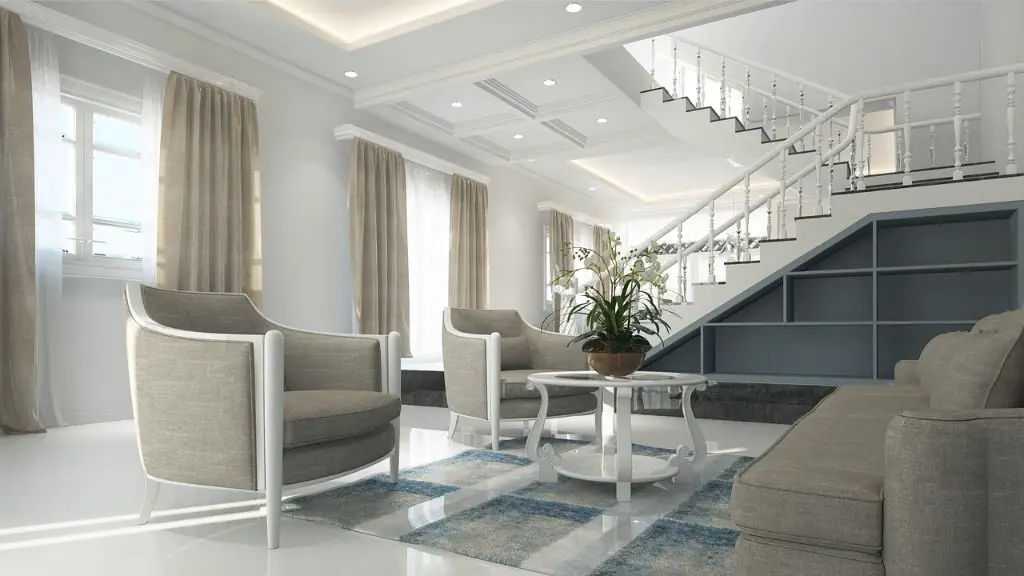
To create a sustainable design, architects must consider the lifecycle of a design. This includes considering the materials used, the construction methods required and the energy efficiency of a design. By considering sustainability during the design process, architects can create designs that are not only user friendly but also reduce their impact on the environment.
Environmental sustainability should also be considered when assessing user experience. For example, designs that incorporate green spaces can encourage users to interact with the environment in a positive way. Designs that create natural corridors and natural habitats can also encourage users to interact with nature, and can lead to a greater appreciation of the environment.
Sustainability must be considered in all stages of user analysis in architecture. Architects must consider how their designs can minimise the environmental impact of a design while also meeting user needs. User analysis should include user input on the sustainability of a design and the impact of the design on the environment.
User analysis in architecture must also consider technology. Technology is increasingly being used in the design and construction process and can be used to enhance user experience. Technology can be used to improve user experience by providing more interactive, engaging and personalised user experiences.

For example, augmented reality and virtual reality can be used to give users a more immersive experience of a design. Architects can use virtual reality to walk a user through a design before it is built, allowing users to gain a better understanding of a design before it is built. Augmented reality can also be used to create a more immersive experience, by allowing users to interact with a design in a virtual space.
Technology can also be used to enhance user safety and security. For example, building management systems such as security cameras, access control systems and fire alarms can be used to keep users safe and secure in a building. Technology can also be used to track and manage user activity within a building to ensure users are following safety protocols.
User analysis in architecture must consider the impact of technology on user experience. It is important to consider how technology can be used to enhance user experience, improve safety and security and create a more sustainable design. Technology can be a powerful tool to enhance the user experience of a design, but it must be used responsibly and with consideration for user needs.
Accessibility
When conducting user analysis in architecture, accessibility must also be taken into consideration. Accessibility is an important consideration in design, as it enables people of all abilities to access and use a design. Architects must consider how to make a design accessible to all users, including those with disabilities.

Designers must ensure that their designs are accessible for users in wheelchairs, as well as for users with visual or auditory impairments. Designers must consider the layout of a space, the height of furniture and doorways and the placement of handrails. It is also important to consider the lighting, colour schemes, signage and flooring of a design, as they can all affect accessibility.
Accessibility should also be considered when assessing user experience. It is important to consider how users with disabilities experience a design and identify any potential areas where the design may need further improvement. Accessibility should be considered when assessing user feedback, as the opinions of users with disabilities may differ from other users.
Accessibility must be considered when conducting user analysis in architecture. Designers must consider how to make a design accessible for all users and ensure that the design meets the needs of users with disabilities. Accessibility must be included in the design process, from the start, to ensure that all users can access and enjoy a design.
Inclusivity
In addition to accessibility, user analysis in architecture must also consider inclusivity. Inclusivity is the practice of creating designs that are accessible and welcoming to people of all backgrounds and abilities. Architects must consider how a design is experienced by different users when conducting user analysis and look for ways to create a design that is welcoming to all.
Inclusivity can be created through the use of colour, materials, signage and furniture. Architects must consider different cultures and lifestyles when creating a design and look to create a design that reflects the diversity of the people who will be using it. Inclusivity should be considered when assessing user feedback, as users from different backgrounds and cultures may have different opinions and experiences.
Inclusivity must be taken into consideration when conducting user analysis in architecture. Designers must create a design that is welcoming and accessible to people from all walks of life, and should be open to input from different users and stakeholders. By considering inclusivity, designers can create a design that is welcoming to all users and reflects the diversity of the users who will be using it.
User analysis in architecture is an important part of the design process and must consider user needs, performance metrics, sustainability, technology and accessibility. User analysis must take into account the perspectives of different users and stakeholders to ensure the design meets the needs of all who will be using it. By considering user feedback, performance metrics and sustainability, architects can create designs that meet user needs while also minimising their environmental impact. Technology can also be used to improve user experience, while accessibility and inclusivity must be taken into account to ensure all users can access and enjoy a design. Ultimately, user analysis in architecture is a crucial step in the design process that enables designers to create spaces that meet user needs and provide a great user experience.

Anita Johnson
Anita Johnson is an award-winning author and editor with over 15 years of experience in the fields of architecture, design, and urbanism. She has contributed articles and reviews to a variety of print and online publications on topics related to culture, art, architecture, and design from the late 19th century to the present day. Johnson's deep interest in these topics has informed both her writing and curatorial practice as she seeks to connect readers to the built environment around them.
Leave a Comment Cancel reply
- DSpace@MIT Home
- MIT Libraries
- Undergraduate Theses
Inclusive : a human centered approach to accessible architectural design

Alternative title
Other contributors, terms of use, description, date issued, collections.
The Complete User Analysis Guide: Personas to Design to Analytics
Are you looking to get started with user analytics? In this guide, we walk through the basics of utilizing user analytics for your business. Learn about data collection methods, different types of metrics and how to analyze all the data collected.
What is user analysis and why is it so important?
The user analysis process from start to finish, step 1: starting with personas, step 2: user journey analysis—mapping out users, step 3: product design, creation, and implementation, step 4: selecting a user analytics tool, step 5: how to set up your user analytics software, step 6: analyze and apply your findings.
User analysis is the process by which engineers, developers, and designers track how users engage and interact with their software, product, or application in an attempt to improve their product, bring more users in, improve user engagement with their product, and the general success of their application .
To make sure you focus on the right metrics and know how to use the information you gather properly, you must first understand why user analysis is so important, and what you stand to gain from tracking user behaviors. Here are the main reasons:
- Understand how users engage with your product: Learn the features that are most popular, how and why the product is used the way it is, and what your users want from it
- Develop user profiles based on user actions and attributes: Establishing distinct personas will help you understand how different groups of users interact with your solution, which can help you design a more appealing product for each group
- Gather quantifiable data on your users —This allows you to identify, detect, and eventually predict trends and behavior by users
- Product design and development: Making the right decisions based on informed metrics tracking and a detailed customer roadmap will improve decision making as it relates to design changes, new/updated features, and onboarding strategy
- Analyze and apply information: Product design and development updates affect user experience, retention, churn, and conversion, so using your data to inform this decision making is key to your success
Product design and development is a continuous process. From creation, it should be an endless cycle of receiving, analyzing, and applying feedback to make the product better. This information can come in various forms, including surveys, data analytics, and customer feedback. Use each source as needed, making sure to track the metrics that matter most to your software, product, or application.
The number of people using your product is not the only thing you need to consider in the designing stages of your product. Knowing who is using your product, and the user paths they follow within your software or application is important for improving engagement.
Develop user personas by identifying characteristics, attributes, and behavior of your users/customers. These personas are meant to represent a collection of people that fit these categories, and represents your users in a general, but in a quantifiable way. It’s best to name these personas so they are easy to work with. User personas help you envision your target audience, allowing you to draw in more users, keep them happier, and increase your conversions!
What Now?/Next Step: Once you’ve developed these groups, start developing user personas with this guide!
Now that we know who our users are, we need to identify user paths to analyze this data. This is a crucial step for applying data to your product to gain the greatest impact! Without doing user journey analysis , the personas you’ve developed won’t help you nearly as much.
User journey analysis is the process of examining the path your user takes from the moment they interact with your website or app to becoming an active user. These "maps" of each persona’s unique user experience outline every step a person can follow when using the product. Better understand:
- How users download your product?
- What is the onboarding process?
- What training materials or guidance is provided?
- What are the first actions users take within your product?
- What incentives are given to return or reuse the application?
There may be more than one user journey, and some may be more common than others. This is true if you have a product that is on multiple platforms, such as web and mobile. However, you’ll want to outline all possible stages of the journey to understand the funnels that lead your potential users to full, converting, active users.
Next Step: Funnel analysis is the way to measure and understand how users are progressing through your various maps, and most importantly, will identify areas with a lot of drop-off. Make sure to track metrics related to these funnels using analytics tools to decrease your churn rate and create more engaged customers.
Product design is often thought of as a conceptual, artistic, and creative process. But to produce a product that users want, it takes more than imagination and innovation.
Usability analytics related to the design, creation, and implementation stages of your product development is essential for making these processes flow seamlessly. It gives you the knowledge to make winning decisions about your product that will change its success. A metric-driven product design process is ideal to custom tailor your product to what users want!
Here are some best practices for product design:
- Identify your problems and solve them —Don’t make updates or add features that don’t clearly address the feedback you’re getting from your users
- Master of one —Focus on your task, keep it minimal, and be the best at what you do (in other words, don’t try to do too much and waste resources!)
- Plan and execute —Be methodical but deliberate in your planning and execution; don’t move too fast but don’t fail to capitalize on an opportunity
- Design to build —Consider the manufacturing process and how the product will be brought to market during design to save time and money later on
- Full customer experience —Develop an instructive, meaningful, and immersive ux that takes packaging, marketing, and product use into account
Next Step: To dive deeper into the real-life application of these practices, see the 7 lessons we learned about product development from our own users.
Choosing a tool to track everything you need for your unique strategy comes down to the depth of user behavior analysis you require. The more information you have, the better insight you will have into your customers. This should give you a leg up on competitors, allowing you to adapt to what your users want –and don’t want– faster and more accurately.
Here are a few great tools to use depending on your user analysis strategy:
Amplitude Behavioral Platform Gives you a complete 360-degree view of user behavior, including how active they are, where and how they engage, and full customer paths. Examine every path users take, and configure data in different ways to gain meaningful insights. With real-time data, you can always understand exactly what’s happening with your product.
Google Analytics As one of the most popular behavioral analytics tools on the market, it offers an easy to access platform, lets you display information in various ways, and export easily with simple integration. Pandering to the larger demographic, there aren’t as many unique metrics to dig deeper into every possible user path and where all drop-offs are occurring.
Clicky Clicky is a great software application for user experience analysis, with a range of metrics that you can track. It also offers real-time data as opposed to delayed data like Google Analytics. However, the user experience and interface is slightly outdated and doesn’t compare to some of the other products available.
When it really comes down to it – the more you know the better. Having a user analytics tool that enables you to dive into the specific metrics that matter most to your business will help you get the full picture. With real-time, detailed metrics, a view of the full customer path, and an understanding of your user funnel, you will be able to gain real insights and make meaningful changes to increase engagement, retention, and conversions.
Next Step: Do a comparison of the top analytics tools to figure out which one best suits your product development.
Many of the user feedback tools used today are applications or extensions that can easily be downloaded and installed. You could sign in to a website, run an extension on a web browser, or open an application that runs on your computer or mobile device.
Many user analytics platforms are relatively accessible, but you will want to ensure that you can convert data between all the programs you use, so you want a platform that integrates well, like how Segment can be used to convert information from Clearbit , so it can be fed into Amplitude.
Choosing a tool will depend on how you want it to function. If you prefer running an application for ease-of-use of its dashboard, try to find an application. If you enjoy using an extension on a browser where you have other tools, consider a tool like that. Either way, you’ll want to experiment with the configuration of data once you get your user needs analysis tool running. Group related data sets together, creating a main page with all your most important metrics, and display the information in a way that best lets you compare and analyze!
Next Step: Take the onboarding tour for beginners from your tool of choice, like this stellar new users guide from Amplitude .
Finally, you’ve made it to the last step! All steps leading up to this are an essential part of the process, so make sure to perform them in succession to truly understand your users. This stage of the process is what makes all this hard work matter.
Now that you’ve analyzed the customer paths, found the best tools to use, and tracked all relevant metrics, you need to put this information to good use. With the information most relevant to your product, you now need to analyze it and apply it to your application.
Here are a few ways to use the data you have:
- Pinpoint main causes of drop-off: Identify the largest drop-off points along your customer paths, onboarding processes, and customer lifecycle and learn where to focus your efforts first
- Highlight product features: Figure out which product features are your biggest successes, and then highlight them, expand them, and improve your winners
- Cut baggage: Eliminate the features that aren’t helping, allowing you to save time, resources, storage, etc.
- Identify training opportunities: Seek out areas where users are having challenges using your product effectively or properly and improve on training resources to convince them why your product is valuable
- Adapt to feedback: Use the information you get to adjust your product, marketing, and overall strategy to meet what they are asking of you
Next Step: Do some more learning about user analytics in this ultimate guide to mobile analytics .
What is most important to remember here is that—if done properly—this 6-step process to user data analysis will guarantee that you truly understand your users and what they like about your product. By taking the necessary steps to get information about your users, the insight you gain will help you make meaningful changes to drive growth, retention, engagement, conversions, and inevitably, achieve success.
- Hispanoamérica
- Work at ArchDaily
- Terms of Use
- Privacy Policy
- Cookie Policy
- Architecture Books
Site Analysis

- Published on May 13, 2020
The "Site Analysis" electronic book prepared by Tifa contains thirty-six types of site analysis and studies, architectural examples, how-tos and tips.
In his book, Tifa collects Site analysis types for students and young designers and explains the reason for doing each analysis by giving examples of architectural projects which got use from this specific analysis.
“Site Analysis is one of the most important and effective ways to find a concept. Therefore, the more detailed, meaningful and comprehensive we will be, The more useful Analysis would help us think of the conceptual form, mass, materiality, approach, landscape and much more.
An analysis is the research process where we are familiar with existing assumptions, expectations, and conditions, and then we create our first impressions and then create a complete framework to understand the site that helps us in our design decisions.
You can download the free Ebook from this link: https://drive.google.com/file/d/1kS4l3ZaInsFGv9kXiEvxIRkHfLhIaSe7/view?fbclid=IwAR0zeh4ZQkJe5rog4RVT7dmgWHZgV-X9n67cmm1l6HZgawy_inCQULLxVVU
Publication year


Image gallery

- Sustainability
世界上最受欢迎的建筑网站现已推出你的母语版本!
想浏览archdaily中国吗, you've started following your first account, did you know.
You'll now receive updates based on what you follow! Personalize your stream and start following your favorite authors, offices and users.
Hire From Us
BIM for Architects
Master computational design, bim for civil engineers.
Become a Mentor
Join thousands of people who organise work and life with Novatr.
Site Analysis Categories You Need to Cover For Your Architecture Thesis Project
Neha Sharma
05 mins read
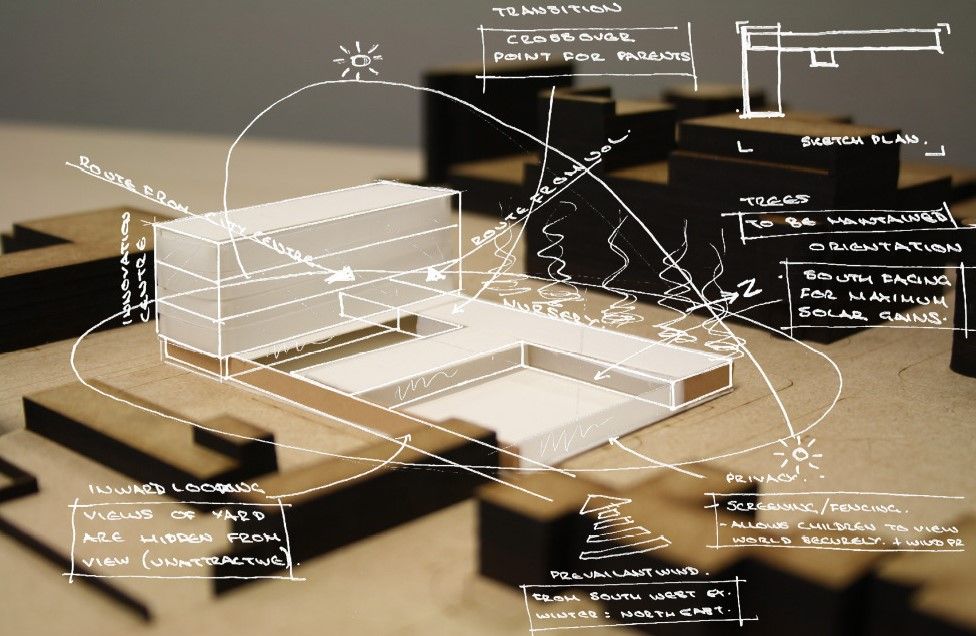
After having spent hours brainstorming ideas, building the perfect brief and selecting a great site for your architecture thesis topic, the question that pops into every student's mind is, where do I start?
While you build a brief and an area program, you need to simultaneously be conducting a detailed site analysis. Being architecture students, we’re no strangers to a good site analysis, but sometimes it’s good to have a checklist to see what all you should be covering!
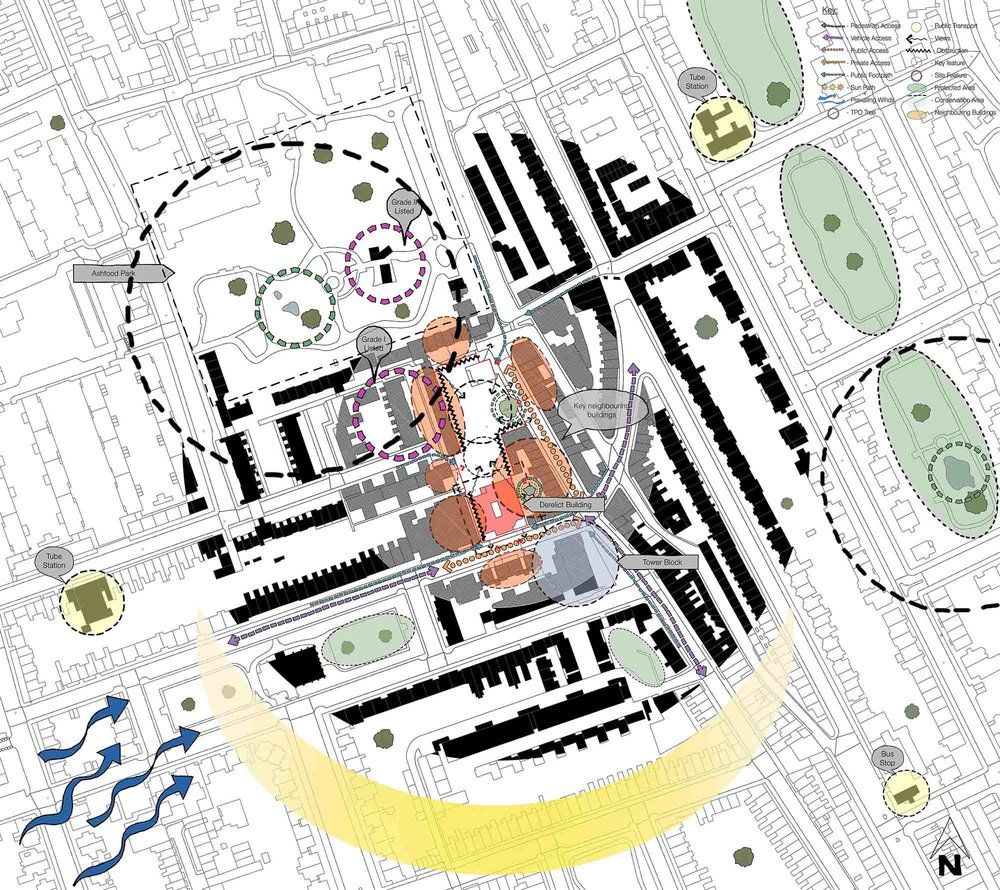
Architecture Site Analysis
As we know, the Site Analysis is a study of the portion of land selected for your thesis project. It’s a crucial step involving the collection of data on all possible tangible and intangible aspects of your site, to help you make informed design decisions throughout the semester.
For all categories we will put down as a part of the checklist, the process of a good site analysis could be broken down into the following three parts: Documentation: Gathering all relevant data. Analysis: Critically studying the gathered data. Inferences: Making possible deductions from the analysis for your design.

The three steps of a Site Analysis (Source: Author)
Agreed that it is a formidable task, but do not be overwhelmed. Read through our checklist of site analysis categories for your architecture thesis project, and make one for yourself!
[Read: 7 Tips on Choosing the Perfect Architecture Thesis Topic For You ]
1. Movement, Connectivity and Circulation
The suitability of your site for the chosen architecture thesis topic is determined by the connections it has to the surroundings. The connectivity of your site can be on 2 scales: Macro and Micro.
Macro-connectivity is on a larger scale which explores access routes to the major nodes in a region like transit terminals, hospitals, offices, commercial centres, etc.
Micro-connectivity is defined by the immediate site network like access roads, surrounding buildings and proximity to project relevant utilities. This may help plan the major circulation paths on site.
Knowing how well-connected (or not) your site is will help make crucial design decisions like entrances and exits, how much parking you need, what kind of traffic you’re catering to, etc.
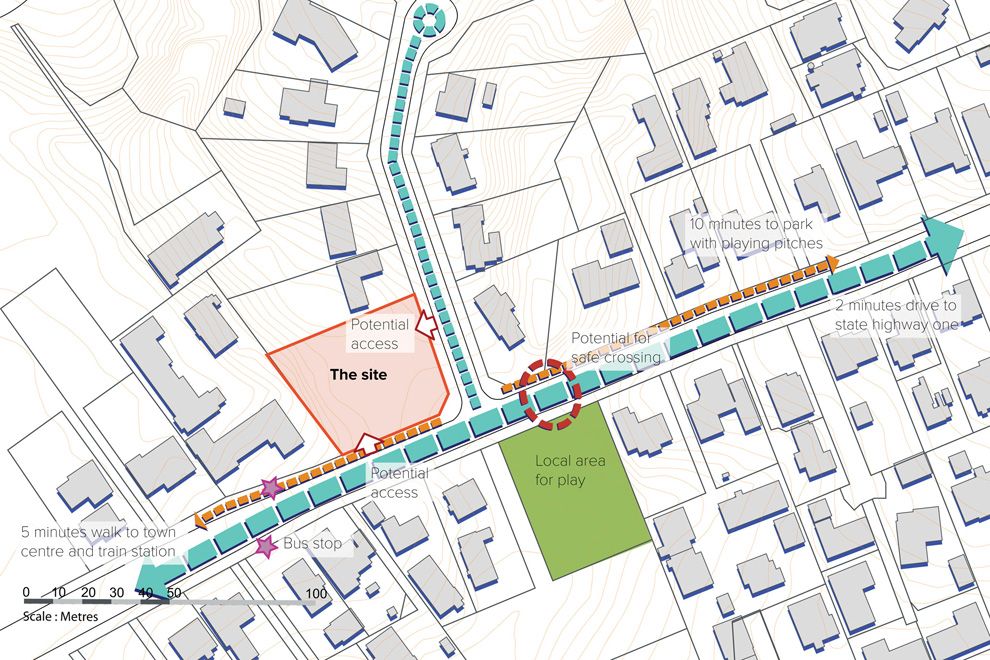
Source: www.aucklanddesignmanual.co.nz
2. Immediate Site Context
Context is what is happening (or has happened) in, out, around and about the site! It involves areas like the local architectural style, materials, construction techniques, historical and cultural background, analysis of edge conditions , urban morphology , prior uses, political conditions or anything that may be relevant to the site.
I don’t think we need to explain why this is important to your thesis, because if you needed to know, you wouldn’t have reached thus far in architecture school!

Source: www.pinterest.com

3. Zoning and Development Control Regulations
Every region has laid down its development control regulations, zoning and land use patterns. Various factors like site location, type of zone it falls under, land use as per DCR, prevailing vehicular/ pedestrian traffic (high, medium, low-density zones) and permissible setbacks give you an idea of how suitable the site is for the project chosen. Prominent points to note would be the FAR , permissible built-up area, setbacks, height-restrictions, etc.
This will make your thesis as realistic as possible, giving you guidelines within which you must plan and would prevent any faculty or jury member from questioning the legitimacy of your thesis.
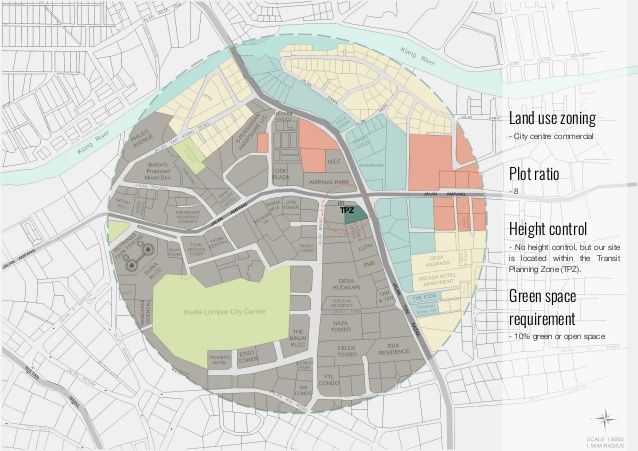
Source: Studio 6 site analysis, slideshare.com
4. Climate and Ecology
What is good architecture if not an immediate response to climate? One of the first and most important things to know about your site is its climatic conditions. To make things simple, divide the study into 2 parts:
Macro-climate - The climate of the larger chunk of land, like the region or country the site is located in and remains constant (more or less) irrespective of the architectural developments taking place. Here, the sun path, seasonal temperatures, humidity, annual precipitation and prevailing wind direction are common data acquisition sections and are the deciding factors for (but not limited to) the building’s location on site, its orientation, form and massing.
Micro-climate - The local climate conditions that might affect design decisions like the presence of water-bodies nearby, existing vegetation, topography, etcetera. It is especially crucial when dealing with projects abutting lakes, rivers or the sea, where the effect of water-body may dictate your design development. Or a site in a hilly region where contour study/slope analysis is a must!
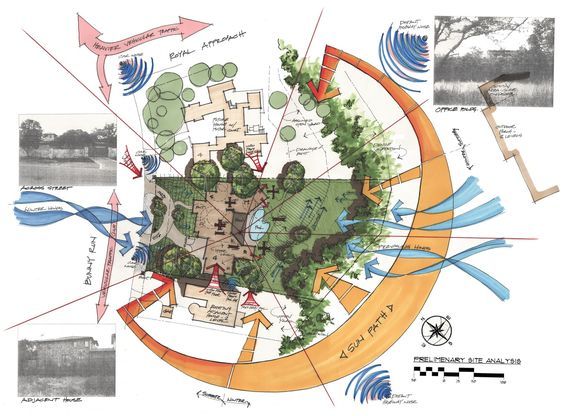
Source: www.lassetercoa.wordpress.com
5. Demographics
Design is for your users, and good architecture takes full account of them. Demographic analysis involves the socio-economic study of a region by categorising its population into religion, ethnicity, cultural background, income profiles, nativity and occupation. This analysis is key for socially or culturally sensitive architecture thesis topics like places of worship, community housing and welfare centres.
Want to create something for the people? Know them first!
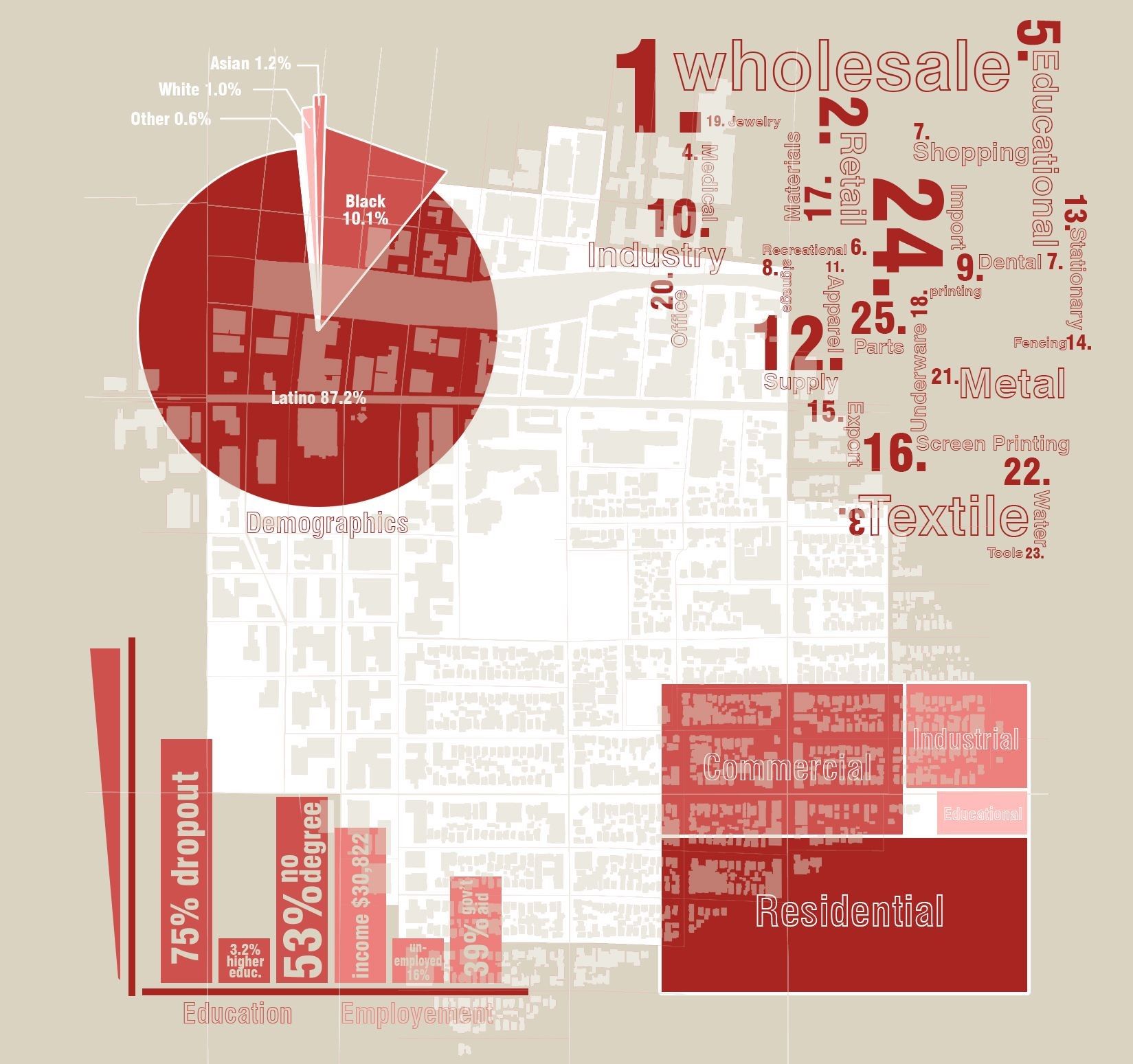
6. Services and Amenities
A brief study of site services is essential to know how your site is connected to basic amenities like drinking water, electricity, drainage, sewerage, or telephone and internet lines (all hail WiFi!).
For planning and locating your building services, you need to know where the service lines are going and how they’re laid out, including any existing service features on site.
7. Sensory Analysis
Does your site have points where the view is just fantastic (maybe overlooking a waterbody, eye-soothing greenery or the cityscape)? Or maybe it has spots where there is unbearable noise (could be from your weekly vegetable market or that one lane through which the whole city has to travel)!
More often than not, such sensory analysis of the site is neglected. But when such observations are noted and inferred from, they can be some of the strongest drivers of your architecture thesis project.
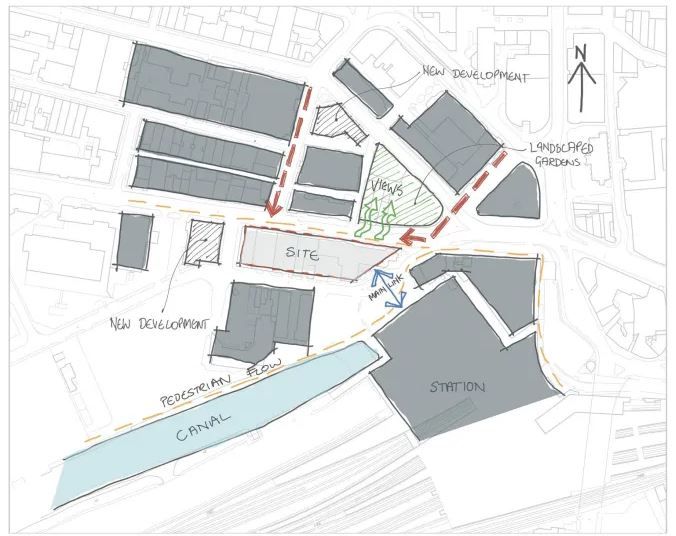
Source: www.wp.com
It is always good to make a checklist while dealing with a lot of data, and the site analysis is no exception. However, please do not limit yourself to the above list, as each site is unique and may have exceptional needs. You may need to do additional analysis particular to the features of your thesis, as it reflects the individuality of both the project and the student. Depending on your architecture thesis topic, other categories may include historical analysis, water/soil integrity sampling, traffic volume analysis, and more.
Having read the above list that has been put in place for you, go ahead and put your hard work and magic in place too! Novatr is always here to help.
Join 100,000 designers who read us every month
Related articles
7 Tips on Choosing the Perfect Architecture Thesis Topic For You

All Articles
Your next chapter in AEC begins with Novatr!
Ready to skyrocket your career?
As you would have gathered, we are here to help you take the industry by storm with advanced, tech-first skills.
Privacy Policy
Terms of Use

IMAGES
VIDEO
COMMENTS
Through the juxtaposition of User Analysis and Architectural Design, this paper analyzes the role of users in various disciplines and the available tools to collect and analyze user experience ...
November 18, 2023 by Anita Johnson. User analysis in architecture is a design process used to gather, interpret and analyze user feedback in order to inform the design process. User analysis allows architects to consider the opinions and experiences of users in order to create the the most highly functional and user friendly design. Summary Close.
MIT Architecture Final Thesis Reviews, May 21, 2021 Bachelor of Science in Art and Design (BSAD) Seo Yeon Kwak 6 BSAD. Clare Liut 8 BSAD. Chloe Nelson-Arzuaga 10 BSAD & 2A. DEPARTMENT OF ...
User needs identification and analysis is an important stage of the product design process. However, this step is often overlooked by many engineers because it is difficult for them to recognize the benefits of user needs analysis. In addition, numerous methods have been developed to help designers to understand and consider the needs and desires
1. What You Love. Might seem like a no-brainer, but in the flurry of taking up a feasible topic, students often neglect this crucial point. Taking up a topic you're passionate about will not just make for a unique thesis, but will also ensure your dedication during tough times.
(Kayama and Kamto 2001) Architecture design is a knowledge-intensive activity (Rodgers et al. 2001). When learning architecture design, students must rely on the regular revisions and suggestions from teachers in class or in the studio (Schön 1983). In addition, they also have to collect massive amount of
1.4 Art and Architecture 05 1.5 The Concept of User OS 1.S Architecture, Architect and User 07 1.7 Design 'For' People and Design 'With' People 08 Chapter Two User Perception and Architectural Design - Problems and Challenges in Housing 2.1 Perception in General 11 2.2 User Perception 12 2.3 User as Major Generator of Architecture 12 2.4 User ...
Approval of the thesis: ASSESSMENT OF CONVENTION CENTERS FROM USERS' PERSPECTIVE: APPLICATION OF IMPORTANCE-PERFORMANCE ANALYSIS submitted by TUĞBA PEMBEGÜL in partial fulfillment of the requirements for the degree of Master of Science in Building Science in Architecture Department, Middle East Technical University by, Prof. Dr. Canan Özgen _____
This thesis proposes a method for assessing the indoor environment of a library—more. specifically, how conducive a library's indoor environment is to studying. The method involves. the integration of tree analysis and the tallying heuristic function. A tree model is necessary in.
User Analysis UX methods for understanding your user's context, needs, and goals to drive your design Before designing and building an application, it is helpful to understand the user scenarios that drive the decisions about what, why, and how the application is being built. By understanding who the audience is, the context in which they ...
This thesis discusses how different paradigms within contemporary architectural discourse ground different approaches to users. It reveals certain limitations of the dominating conceptual ...
Measurable Outcomes: 1. Provide an innovative and rigorous design concept in response to a formulated thesis statement. 2. Provide a clear design research method and approach to the act of design ...
Integrating accessibility and universal design principles in architecture could enrich our understanding of a space and add a new layer of spatial experience for everyone. The purpose of this thesis is to investigate what makes spaces inclusive and usable for those with disabilities, how we can design for a broader population, and whether we ...
This thesis presents the seven-step PUMA user acceptance framework, created to evaluate user acceptance of a current ... Selecting a functionality and aim of analysis 25 3.2. Defining user criteria 26 3.3. Selecting users 26 3.4. Presenting functionality to users 27 3.5. Functionality Presentation 29 3.6. Creating the Survey Questionnaire ...
User analysis is the process by which engineers, developers, and designers track how users engage and interact with their software, product, or application in an attempt to improve their product, bring more users in, improve user engagement with their product, and the general success of their application. To make sure you focus on the right ...
Architectural Thesis Exhibition 2012 | Faculty of Architecture Chulalongkorn University ... Faculty of Architecture Chulalongkorn University Menu. Skip to content. Auditorium/Theater; Commercial; Education; Hospital; Museum; Office Building/Embassy; Religious; Resort&Hotel; Stadium/Arena; Other | About; Search. User & Schematic Analysis ...
The "Site Analysis" electronic book prepared by Tifa contains thirty-six types of site analysis and studies, architectural examples, how-tos and...
In recent years, many industries and organizations have focused on how to create more innovation by involving knowledge from such external sources as stakeholders, experts and users (e.g ...
5 SITE ANALYSIS 5.1 Location 5.2 Site Characteristics 5.3 3km radius Site Study 5.4 History and Development 5.5 Building use map 5.6 Transport connectivity 5.7 Parking Study 5.8 Climate analysis 5 ...
architectural morphology and user behavior relationship in shopping malls: a comparative case study on forum shopping centers in istanbul through syntactic analysis July 2017 Conference: 11th ...
You may need to do additional analysis particular to the features of your thesis, as it reflects the individuality of both the project and the student. Depending on your architecture thesis topic, other categories may include historical analysis, water/soil integrity sampling, traffic volume analysis, and more.